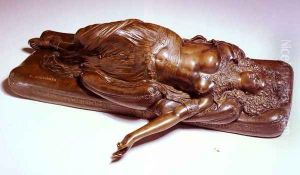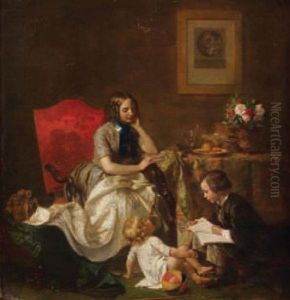Jean Baptiste Clesinger Paintings
Jean-Baptiste Auguste Clésinger was a French sculptor and painter, born on October 22, 1814, in Besançon, France. He was the son of a sculptor, Georges-Philippe Clésinger, who provided him with his initial training in art. Early in his career, Jean-Baptiste moved to Paris to further his studies and establish himself as an artist. His work quickly gained attention for its detailed realism and emotional intensity.
Clésinger's sculptures often depicted themes from mythology, history, and contemporary life, executed with a Romantic sensibility that was popular during his time. One of his most famous works is 'Woman Bitten by a Serpent' (1847), which caused a scandal at the Salon of 1847 due to its sensual realism and the rumored use of a life cast from his model, Apollonie Sabatier, who was also his lover. Despite the controversy, the piece was a commercial success and cemented his reputation as a talented sculptor.
Beyond his sculptural work, Clésinger also gained recognition for his contributions to funerary art, creating several notable tombs and memorials that are considered masterpieces of the genre. He was awarded the Legion of Honor in 1849, which was a testament to his growing prominence in the French art world.
Throughout his career, Clésinger remained a controversial figure, often clashing with the strict academic standards of the time. He was, however, admired for his technical skill and his ability to capture the subtleties of the human form. His marriage to the daughter of novelist George Sand, Solange Dudevant, in 1847 brought him into contact with the leading literary and artistic figures of the day, although the marriage was troubled and eventually ended in divorce.
Jean-Baptiste Clésinger continued to work and exhibit his art until his death on January 5, 1883, in Paris. His legacy is that of an artist who bridged the gap between Neoclassicism and Romanticism, infusing his classical subjects with a sense of modern drama and psychological depth. His works can be found in various museums and public spaces, particularly in France, where he is still celebrated as a significant figure in 19th-century art.







